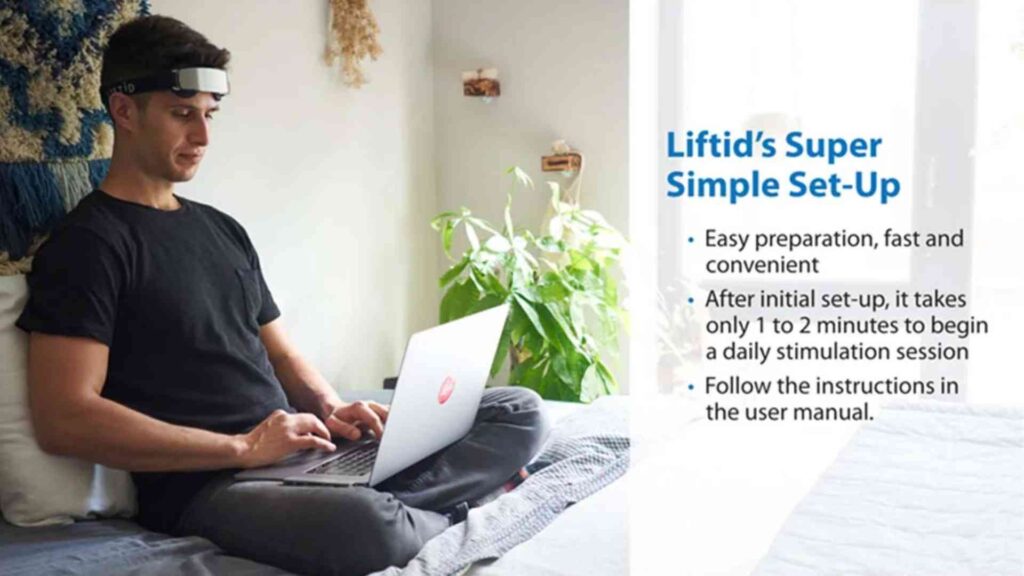
When LiftiD stepped onto the Shark Tank stage to showcase their Brain Stimulator, it wasn’t just another pitch; it marked a pivotal moment for transcranial direct current stimulation (tDCS) devices. By presenting a technology aimed at enhancing cognitive function through neurostimulation, LiftiD captured the attention of the Sharks and, more importantly, introduced the concept of tDCS to a broader audience. This exposure is significant, considering the relatively niche status of tDCS devices in the mainstream wellness and tech markets.
The importance of this moment cannot be understated. For many viewers, this was their first encounter with a technology that promises to boost concentration, memory, and overall brain function without pharmacological intervention. The discussion and interest generated by LiftiD’s presentation have since ignited conversations around the potential and benefits of tDCS, bridging the gap between specialized neurotechnology and everyday wellness practices.
Moreover, the feature of LiftiD on Shark Tank serves as a beacon for the tDCS community. It not only validates the scientific principles behind neurostimulation but also showcases the growing market and interest in non-invasive methods for enhancing cognitive abilities. As we delve deeper into the implications of LiftiD’s Shark Tank appearance, it’s clear that this event marks a significant stride toward mainstream acceptance and understanding of tDCS technology.
LiftiD’s Journey To Shark Tank
LiftiD’s inception was inspired by the untapped potential of transcranial direct current stimulation (tDCS) technology. The founders envisioned a future where neurostimulation was not confined to clinical settings but integrated into daily life for enhancing cognitive abilities. Their commitment to this vision was fueled by a deep belief in the benefits of a non-invasive, drug-free approach to boosting mental performance. Deciding to present LiftiD on Shark Tank was more than seeking financial backing; it was about seizing a pivotal opportunity to showcase the transformative power of tDCS to a wide audience. They aimed to shift the public’s perception, illustrating how cognitive wellness and efficiency could be achieved through technology, not just traditional stimulants like caffeine and sugar.
The differentiation of LiftiD in the competitive tDCS landscape was its emphasis on being user-friendly and accessible to everyone, not just the tech-savvy or the scientifically inclined. This approach was designed to resonate with the Sharks and, by extension, a diverse audience of potential users who strive for personal and professional growth. The founders’ blend of passion and scientific evidence made LiftiD stand out as an innovative leader in cognitive enhancement tools. Their presentation on Shark Tank was a critical moment, aiming to demystify tDCS and encourage broader societal acceptance. By doing so, they hoped to foster a culture where neurostimulation is regarded as a viable option for cognitive enhancement, breaking new ground for the acceptance and application of tDCS in everyday life.

The Meaning For tDCS Devices
LiftiD’s appearance on Shark Tank symbolized a significant moment for tDCS technology, highlighting a shift towards broader acceptance and interest from both the general public and investors. This exposure not only validated the science behind neurostimulation but also opened the door to discussions about its potential applications in daily life. It underscored the growing curiosity and acceptance among a wider audience, suggesting a readiness to explore innovative cognitive enhancement tools.
The market’s response to LiftiD’s Shark Tank feature has been telling. There has been a noticeable uptick in consumer interest and investment in neurostimulation technologies, indicating a robust market trend towards non-invasive wellness solutions. This shift suggests that the public is increasingly open to embracing tDCS devices as part of their wellness and self-improvement regimes. Moreover, the investor interest sparked by LiftiD’s pitch could pave the way for further advancements and innovations in the field, as more resources are funneled into research and development of tDCS technologies.
This trend reflects a broader movement within the health and wellness industry towards embracing technological innovations that promise to enhance quality of life without the need for pharmaceuticals or invasive procedures. As tDCS devices like LiftiD gain mainstream acceptance, they not only change how we approach cognitive enhancement but also how we view the intersection of technology, wellness, and personal development.
What Happened to LiftiD After Shark Tank?
After their appearance on Shark Tank, Liftid did not secure a deal with any of the sharks. Despite this setback, the company pressed on. Their website remained active, and they continued to sell the Liftid device. The primary challenge seemed to be its popularity. TDCS, the technology behind Liftid, was a big leap for consumers not ready to embrace such a novel method for enhancing mental performance.
Furthermore, the company maintained a presence on social media with a good following base on Instagram, Facebook and Twitter. This online engagement indicates a dedicated, though perhaps niche, audience for their product. In an encouraging turn of events, Liftid was recognized with the Gadgetflow 2019 award for best product. This accolade provided a significant boost to the device’s credibility, despite the skepticism from some Shark Tank investors regarding its efficacy claims.
Despite the absence of a Shark Tank deal, Liftid has demonstrated substantial growth. The company, based in New York, reported an impressive annual revenue of $5,000,000 and a valuation exceeding $20,000,000. This success story underscores that the entrepreneurs behind Liftid managed to navigate past the sharks’ rejection to find their path to prosperity. The journey of Liftid illustrates the potential of perseverance and innovation in the face of skepticism, proving that even without Shark Tank endorsement, there are avenues to success.
Conclusion
LiftiD’s success on Shark Tank hints at a bright future for tDCS devices, suggesting an industry on the cusp of widespread acceptance and innovation. This milestone could herald a new era of investment in neurostimulation technologies, driving advancements in effectiveness, usability, and applications. As public interest grows, we may see tDCS devices become a common tool for cognitive enhancement, integrated into daily wellness routines. The direction of the industry seems poised for expansion, with LiftiD paving the way for further research and broader applications of tDCS technology.
